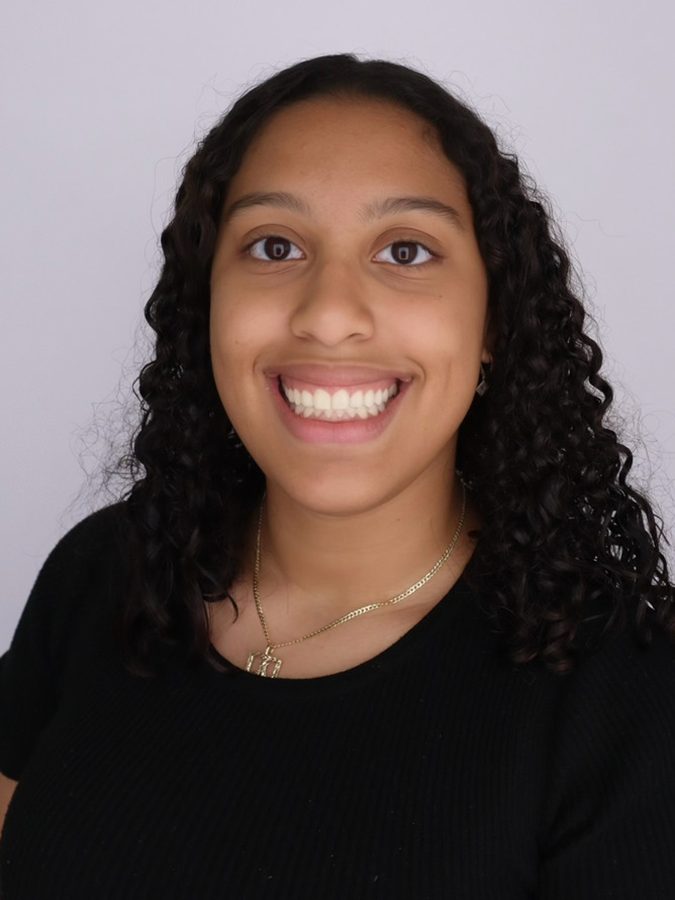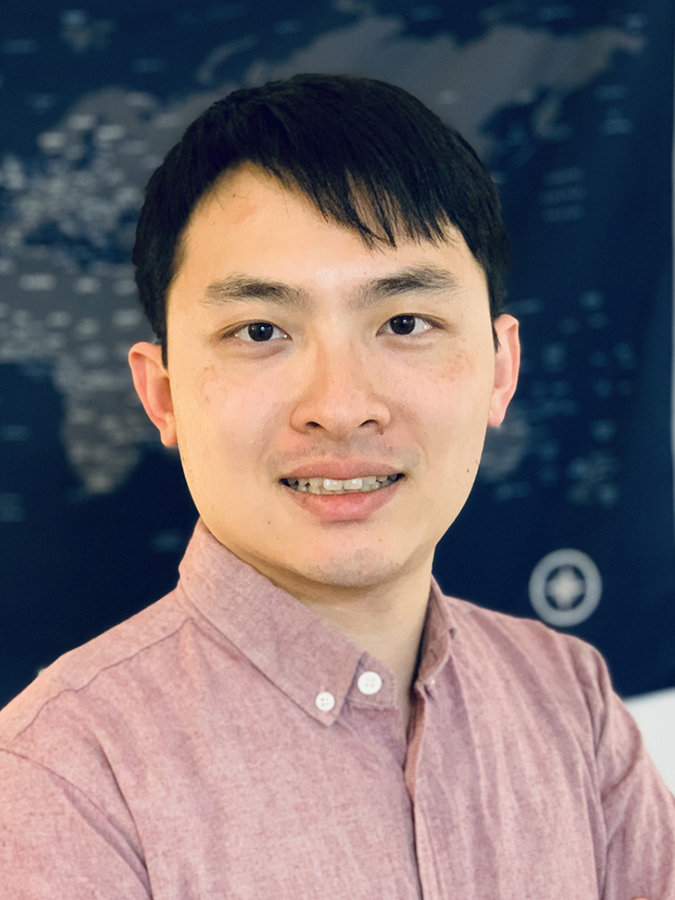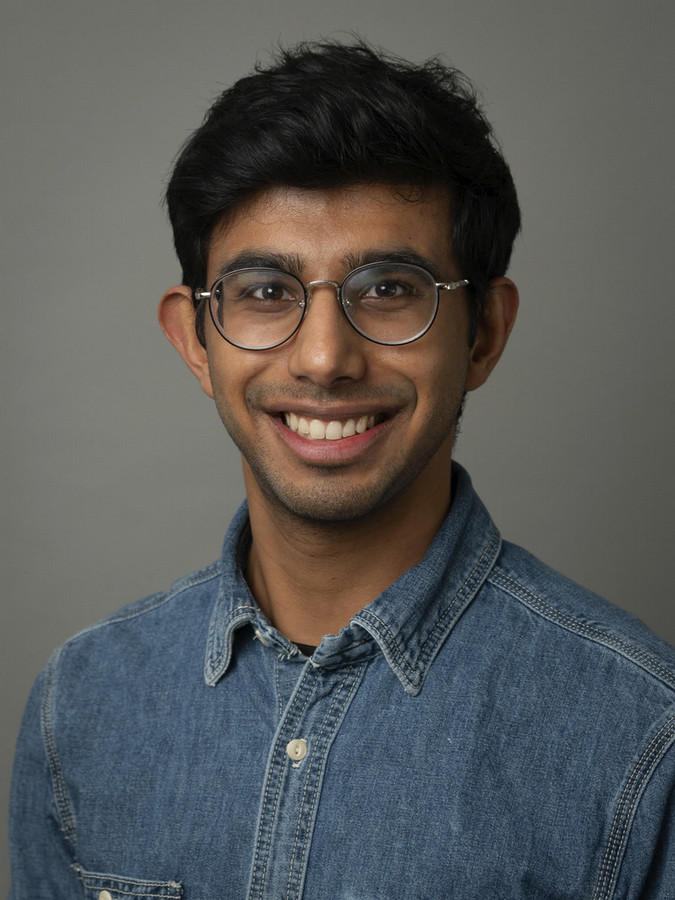Three Engineering students were named Center of Machine Learning and Health Fellows
Carnegie Mellon’s Center for Machine Learning and Health (CMLH) has named two biomedical engineering Ph.D. students as 2024 Generative AI in Healthcare Fellows and a mechanical engineering student a 2024 Digital Health Innovation Fellow.
Three College of Engineering students have been named 2024 fellows of the Center for Machine Learning and Health (CMLH) in Carnegie Mellon’s School of Computer Science. Ann Badia and Keng-Jung Lee, two biomedical engineering Ph.D. students, have been named 2024 Generative AI in Healthcare Fellows. Arnav Garcha, a mechanical engineering student, was named a Digital Health Innovation Fellow. The CMLH Fellowships offer current Ph.D. students from different disciplines a chance to conduct their own research with the goal of advancing healthcare.
Ann Badia’s project for the fellowship uses Generative AI (GenAI) to identify antibiotic resistant bacteria and improve diagnostics and treatment plans in oral healthcare. Badia is focusing on gum diseases, known as periodontal diseases. “Periodontal diseases can cause tissue destruction, tooth loss, and bone damage, and have been linked to systemic health complications such as cardiovascular disease, respiratory infections, and sepsis,” she explains.
Badia discusses how patients can be prescribed antibiotic medications that they don’t need, leading to a number of health issues and negative side effects. “By analyzing how bacteria move and interact with each other, we can better understand the disease process in the body.”
Badia is advised by Tagbo H.R. Niepa, associate professor of chemical engineering and biomedical engineering, whose lab uses a nanoculture platform to study hundreds of different bacterial species. Due to the enormous range and diversity of bacterial species, GenAI can be a powerful tool for healthcare providers to rapidly identify deadly pathogens while minimizing human error.
AI will be a powerful tool to help doctors with diagnostics and manage chronic infection more efficiently.
Ann Badia, Ph.D. Student, Biomedical Engineering
“AI will be a powerful tool to help doctors with diagnostics and manage chronic infection more efficiently,” Badia states. “With generative AI, we can enhance patient care while reducing healthcare cost.”
Keng-Jung (KJ) Lee’s fellowship research will involve the construction of a classification model to classify and study diseases at a molecular level by observing with a type of biomarker, DNA methylation, which reflects cell status. DNA methylation can be studied using an existing FDA-approved blood test, which Lee intends to incorporate with GenAI technology to possibly simplify and refine the cancer screening process.
“If we want to know the type or characteristics of the cancer cells, conventionally we may need to use a tissue biopsy,” explains Lee, who is advised by Siyang Zheng, a professor of biomedical engineering and electrical and computer engineering. “It's invasive, pricey and can be dangerous,” says Lee. Furthermore, non-invasive procedures for cancer screening like MRI scans can also be ineffective, as they only offer a “snapshot” of a cancerous tumor with limited sensitivity, and do not provide any molecular information, which limits researchers.
Lee’s proposed classification model has the potential to both be non-invasive and provide detailed, molecular information. The long-term goal, Lee explains, would be a procedure in which patients provide a blood sample that can be processed into his AI classification model. The model runs on a database of the millions of DNA methylation signatures that can be found in human tissue and cells. This would ultimately allow doctors to quickly and effectively identify the type and behavior of cancer cells present in a patient and provide the best care possible.
Cancer itself is extremely diverse both in type and the way in which it presents itself in each individual human. “It’s always better to pick up on this information early, because there's more room for a doctor to provide personalized care,” Lee says.
Arnav Garcha’s project for the fellowship will construct a model that replicates a person’s blood vessels in order for physicians to better diagnose and treat potential cardiovascular diseases. The model itself will be a machine learning model, utilizing information about fluid mechanics, biology, and biochemistry in order to create a fast and high-quality simulation for physicians. Speed is particularly important in diagnosing patients at risk of cardiovascular diseases.
Garcha explains that his model is building on already existing technology that simulates a person’s blood flow. “We want to make these simulations or models for thrombosis in arteries or blood vessels that people have not been able to do before,” he says.
Garcha, who is advised by Noelia Grande Gutiérrez, an assistant professor of mechanical engineering, anticipates that his model will not present a steep learning curve for physicians. The model’s output will be a probability score indicating the likelihood of a cardiovascular disease. Time is again of the essence, therefore the medical procedures resulting from the model will need to be both noninvasive and efficient.
Garcha’s project has the potential to further personalize medical treatment. Each individual person is ultimately unique, and their bodies will respond in different ways to both disease and treatment. Garcha predicts incorporating digital technology into diagnoses will use more information about each individual to diagnose them instead of relying on generalized principles. This, he explains, will help improve patient-to-patient level care.



